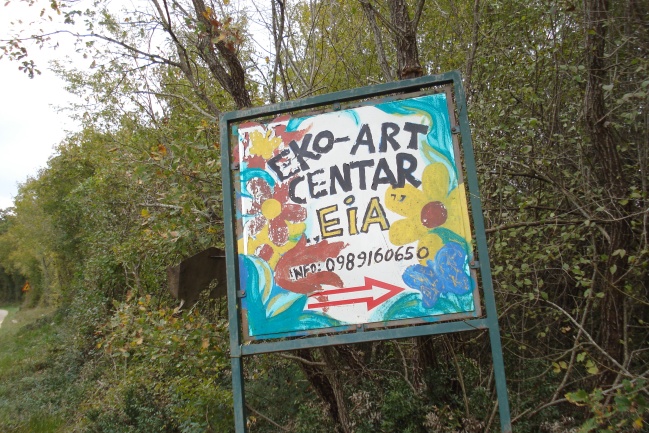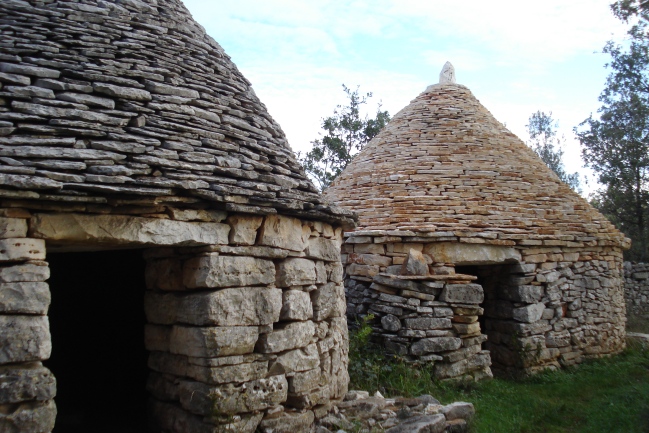As part of my traditional music research, I decided to take a trip to Istria last week. The region is a peninsula on the Adriatic coast and the western part of Croatia (a tiny part of the peninsula is in Slovenia and Italy too but maybe 90% is in Croatia.) Istria has a very interesting history, which is closely connected to that of Trieste. Along with Trieste, it used to be a part of the Austro-Hungarian Empire until it dissolved in 1918. There was a large Italian population at this time and Italian was the official language of the area, along with Croatian. After the Austro-Hungarian period it became a part of Italy – things began to turn sour with the arrival of fascism and forced Italianisation so lots of the Croatian population left for Yugoslavia. Then towards the end of the Second World War, Tito occupied and forced out the opposition – this led to the gruesome Foibe killings and mass Istrian Exodus. When the war ended, a part of Istria was split in two parts, North and South – Zone A and B. Zone A was the Gulf of Trieste and Zone B began at the south of Muggia. It became known as the ‘Free Territory of Trieste’ to diffuse conflict between Italy and Yugoslavia as to who owned this area of land. In 1954 Zone A became a part of Italy whilst Zone B was given to former Yugoslavia. Now the population is largely Croatian – there is a small Italian population, I think somewhere between 5 and 10% and an Italian dialect is spoken in some areas.
So, how has this turbulent time in the 20th century affected the culture and music? Given that there were constant changes of population due to forced emigration, constant changes to the territory and borders, different governments, communism – I thought there could be a rich music tradition – so I got myself a bus ticket and went to find out more.
First of all I spent a few days in Bale in an ecological arts centre as a volunteer. 
In the Summer they run workshops for the public, in Winter its quite quiet. Between building fences and chopping firewood etc. I was able to go on walks and explore the Istrian countryside and landscape. It was a good to be away from the city for a few days and to have time to reflect and evaluate(?!?!) the project so far. I’ve realised, one of the ways my project has transformed from the initial proposal, is that instead of me sniffing around for traditional music styles, it has become more about how a place makes music and how music makes a place (and this includes tradition, obviously.) For example how the location, geographical features, traditions, polictical situations influence the music created and in turn how music that is brought to or created in a place shifts the traditions, landscapes and helps maybe define a place.
We went on trip one day and saw these stone huts. Shepherds used to use them to shelter from rain. You can find them all over Istria and some other parts of the Mediterranean. It was also quite interesting to find the deciduous Oak trees that we have in England as well as another species of Oak from the Mediterranean that is non-deciduous – I found it cool to find natural elements that factor the Eastern/Western location, i.e. it’s not just man-made elements like borders that define areas.
(there were amazing sunsets there!)
After my time in Bale I went to meet a friend of a friend in Pazin, to tell me about the Istrian music tradition. I was in for a treat-and-a-half!! After joining a very lively Croatian family lunch, we spent the afternoon playing instruments and listening to recordings, old and new of Istrian music.
He played pretty much every Istrian instrument going! I was introduced to Dvojnice, a kind of wooden double flute so you can play two notes at once. Sopele – a reed instrument, sounds quite like an oboe. Usually two are played together. Mih – a kind of bagpipes. The bag is made of a goats skin, the pipes are of wood and you can also play two notes at once.
This is a soundclip of the instruments in the order that they are mentioned.
I was curious about the so-called Istrian scale that I’d heard about. As I thought, the term ‘Istrian scale’ started to be used for notation purposes but refers to many different styles of music e.g. vocal, instrumental pieces, music for dancing etc. I had also heard that Istrian music contained quarter-tones – this was another term that came about to describe any interval smaller than a semi-tone. Before there were standard models of instrument making, hand made instruments were quite unique from one another, i.e. holes were in slightly different places, they varied in size etc. This created the ‘quarter-tone’ sound, which is harder to hear now that instruments are made more or less the same.
The vocal tradition is really interesting – usually a male voice leads and a higher female voice accompanies. The female voice is really nasal – i think it’s maybe to imitate the sopele. There is an improvisation element, but most singers must end on the same note. There are also many other arrangements of singing e.g. 2 men, 2 women, sopele accompaniment etc.
I can’t find a really old example of singing – this video from unesco is really touristy and polished, which is the opposite of what i’ve heard and enjoy about this music, but it gives you an idea.
There is also a strong tradition for dance music, e.g. waltzes and polkas. This is quite an anarchic example!
Goran (who was hosting me) also plays the fiddle, so he, very kindly, taught me some tunes from the fiddle tradition. Hooray! Here’s a couple of videos – one is a march and one is a polka.
This is Goran’s band – Veja. They are mixing older Istrian instruments and styles of singing with new instruments and arrangements. The result is very cool – I was lucky enough to sit in on a rehearsal.
In short, I have learnt a lot from my trip to Istria!! Traditional music is certainly alive and well and responding to its surroundings in so many forms. It was a privilege to hear some of it.

ooooooh i like za huts and your nice recordings
Thank you for putting the truth out to others – especially the first two paragraphs….